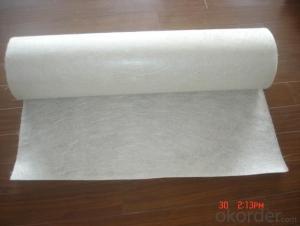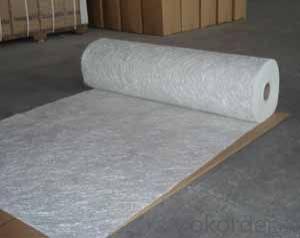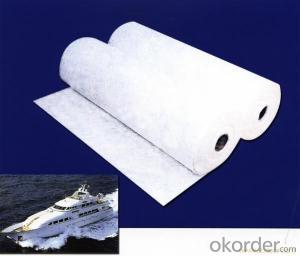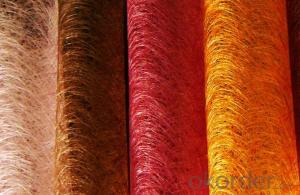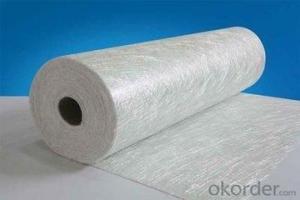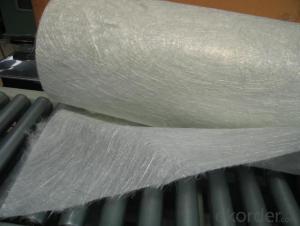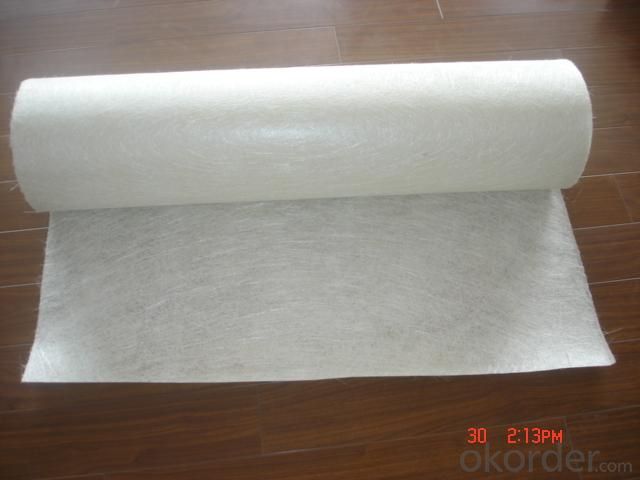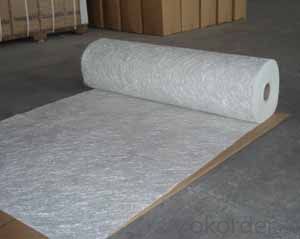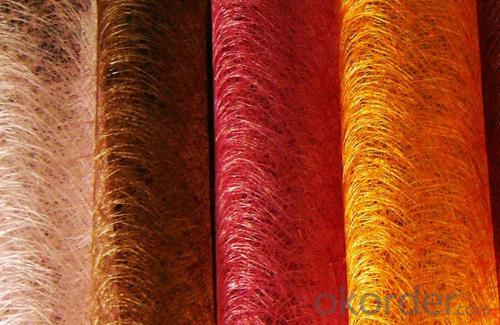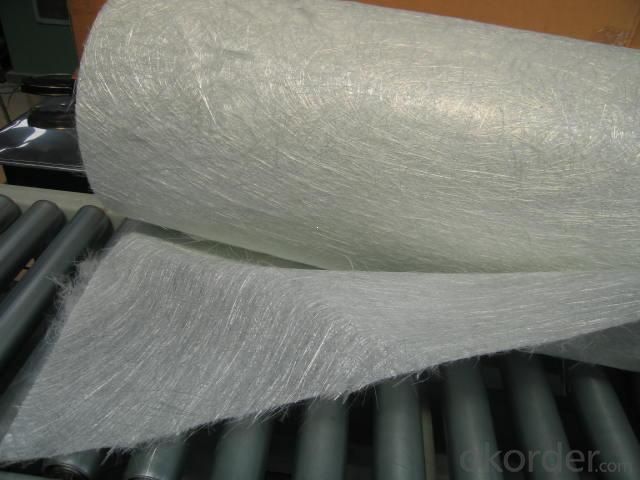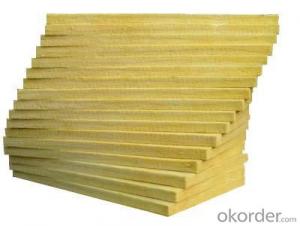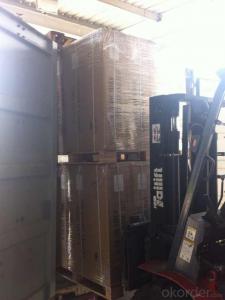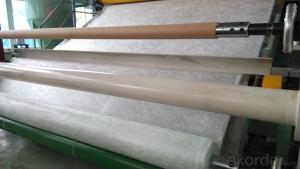Fiberglass Mat Tissue 2024 e-glass Assembled Roving for Chopped Strand Mat
- Loading Port:
- Tianjin
- Payment Terms:
- TT OR LC
- Min Order Qty:
- 100 m.t.
- Supply Capability:
- 20000 m.t./month
OKorder Service Pledge
OKorder Financial Service
You Might Also Like
Quick Details
| Place of Origin: | Hebei, China (Mainland) | Brand Name: | CNBM | Model Number: | YY-ER-CSM |
| Application: | FRP Steel, rod, stick, grating, channel,pipe | Surface Treatment: | Vinyl Coated | Technique: | Winding Filament Roving |
| Dimensions: | E-glass assembled roving | Name: | E-glass assembled roving for chopped strand mat | Type: | E-Glass |
| Yarn Structure: | Single Yarn | Fiber type: | Single-end roving | Compatible resin: | UP, EP, VE, Phenolic resin. etc. |
| Tex Count: | 200-9600tex | Color: | White | Filament Diameter: | 9-24um |
Packaging & Delivery
| Packaging Details: | cartons or pallets,customer request |
| Delivery Detail: | 7-15 days after order confirmed |
Product Description
E-Glass Assembled Roving for Chopped Strand Mat is compatible with Unsatured Polyester (UP),Vinylester (VE) and Epoxy (EP).It is mainly used in the production of powder and emulsion bonded Chopped Strand Mat and also Stitched Combo Mat . It can be used in FRP boats , sanitary apparatus and so on .
Product Feature:
1. Good choppability
2. Excellent dispersion , no matchstick
3. Good anti-static properties
4. Good wet-out in resin
picture
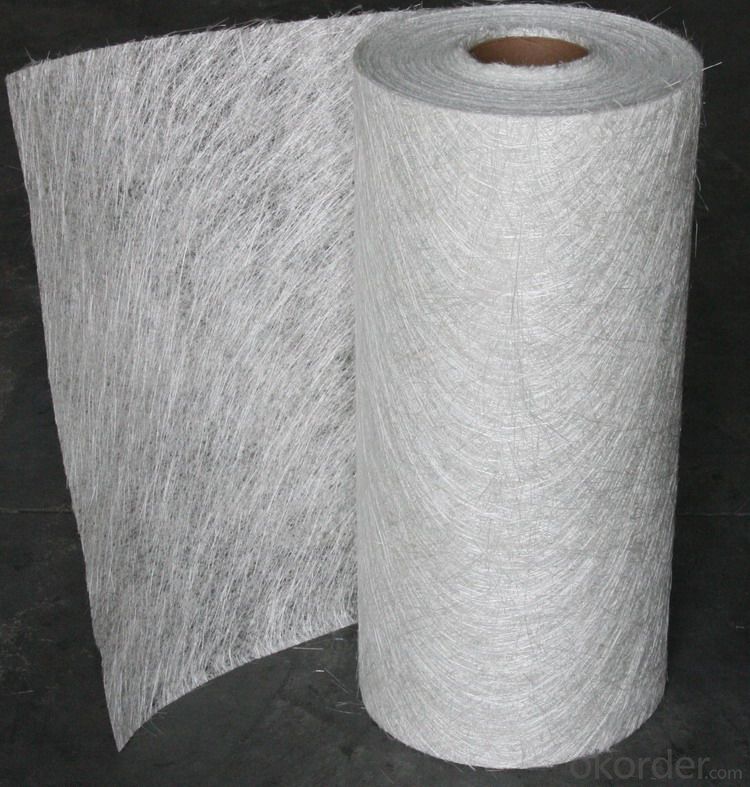
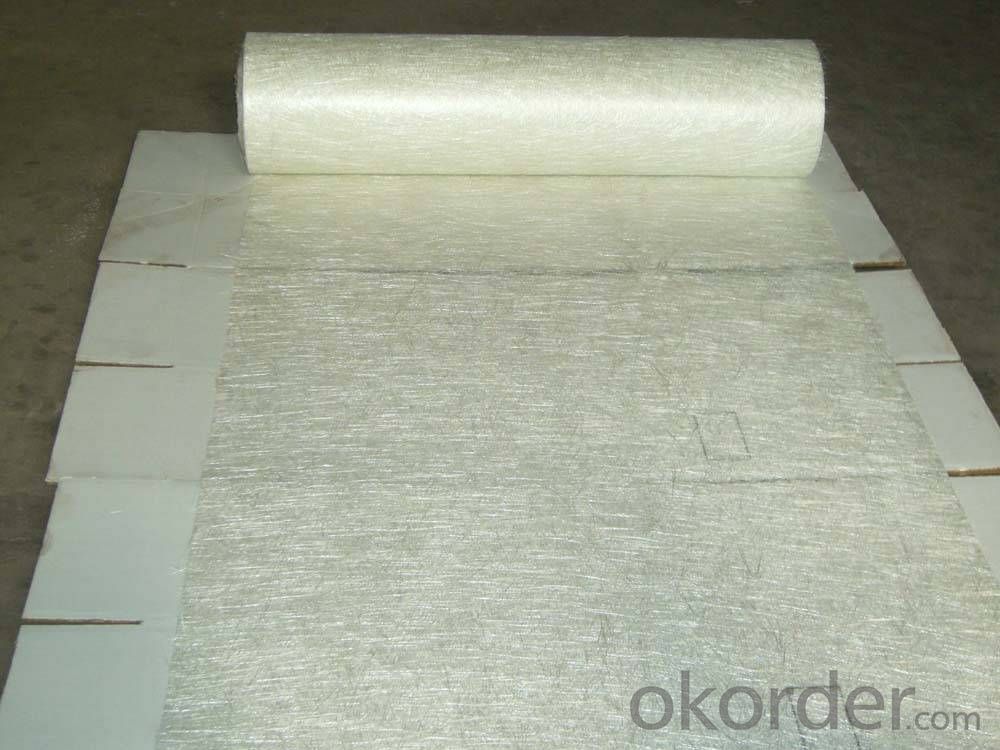


- Q: Can fiberglass mat tissue be used for acoustic insulation?
- Yes, fiberglass mat tissue can be used for acoustic insulation. Fiberglass mat tissue is a lightweight material that has excellent sound absorption properties. It can effectively absorb and dampen sound waves, reducing noise and improving the acoustic environment. Fiberglass mat tissue is commonly used in the construction industry for insulating walls, ceilings, and floors to reduce noise transmission. It is also used in automotive applications and other industries where sound insulation is required. Its high porosity and fibrous structure make it an ideal material for absorbing and attenuating sound waves, making it suitable for acoustic insulation.
- Q: Is fiberglass mat tissue suitable for wastewater treatment applications?
- Yes, fiberglass mat tissue is suitable for wastewater treatment applications. It is commonly used in the construction of wastewater treatment tanks and pipes due to its corrosion resistance, durability, and ability to withstand harsh chemical environments. Additionally, fiberglass mat tissue is non-reactive to biological and chemical elements present in wastewater, making it an ideal material for such applications.
- Q: Does fiberglass mat tissue provide good acoustical performance?
- Yes, fiberglass mat tissue does provide good acoustical performance. It has excellent sound absorption properties due to its fibrous composition, which helps reduce echo and improve overall sound quality in a given space.
- Q: What are the different weights available for fiberglass mat tissue?
- Various industries, including construction, automotive, and marine, utilize fiberglass mat tissue extensively. This versatile material is available in different weights or thicknesses to meet various applications and specifications. The weight of fiberglass mat tissue is typically measured in grams per square meter (gsm) or ounces per square yard (oz/yd²). Typically, the available weights for fiberglass mat tissue range from approximately 30 gsm (1 oz/yd²) to 150 gsm (5 oz/yd²) or higher. The weight of the tissue directly affects its strength, rigidity, and durability. For applications that require a high degree of flexibility and conformability, lightweight fiberglass mat tissue weighing around 30-50 gsm (1-1.5 oz/yd²) is commonly used. These lighter weight tissues are often employed in the production of laminates, reinforcing materials, and lightweight composites. Medium weight fiberglass mat tissue, typically falling within the range of 70 gsm (2 oz/yd²) to 100 gsm (3 oz/yd²), strikes a balance between flexibility and strength. It finds frequent use in applications such as roofing, insulation, and wall panels, where structural integrity and thermal insulation properties are of utmost importance. For applications that demand exceptional strength and rigidity, heavyweight fiberglass mat tissue weighing between 120 gsm (4 oz/yd²) and 150 gsm (5 oz/yd²) or more is ideal. This type of tissue is commonly employed in demanding applications like boat hulls, automotive body parts, and industrial equipment, where durability and resistance to impact and stress are critical. It is important to recognize that the availability of different weights of fiberglass mat tissue may vary depending on the manufacturer and the specific requirements of the application. In certain cases, custom weights can be manufactured to meet unique project needs. In summary, fiberglass mat tissue is available in a range of weights to accommodate diverse applications. Selecting the appropriate weight is essential to ensuring optimal performance and long-term durability in various industries.
- Q: How is fiberglass mat tissue used in the production of chemical storage tanks?
- Fiberglass mat tissue is used in the production of chemical storage tanks to reinforce the structure and enhance their strength and durability. The tissue is typically impregnated with resin and then applied to the tank's interior or exterior surface, forming a layer that acts as a barrier against chemical corrosion and leakage. This combination of fiberglass mat tissue and resin creates a robust and corrosion-resistant tank, ensuring the safe storage of chemicals.
- Q: How is fiberglass mat tissue different from fiberglass cloth?
- Fiberglass mat tissue and fiberglass cloth, despite being woven glass fiber materials, exhibit distinct dissimilarities. Fiberglass mat tissue, an unwoven substance, comprises glass fibers randomly arranged and held together by a binding agent. It predominantly serves as a reinforcement layer in composite materials like fiberglass reinforced plastic (FRP) and fiberglass reinforced concrete (FRC). The random fiber orientation enhances the composite structure's robustness and stability. Notably, fiberglass mat tissue finds widespread usage in applications necessitating strength and rigidity, such as boat hulls or automotive components. In contrast, fiberglass cloth, a woven material, is created by interlacing glass fibers in a specific pattern. It is commonly employed in situations where flexibility and conformability are essential, such as the construction of surfboards or within the aerospace industry. By allowing precise and controlled fiber placement, fiberglass cloth facilitates the production of intricate shapes and attains a superior level of detail in the final product. Ultimately, the primary disparity between fiberglass mat tissue and fiberglass cloth lies in their structural characteristics and intended applications. While fiberglass mat tissue offers strength and stability, fiberglass cloth provides flexibility and conformability. The selection between these materials hinges on the project's specific requirements and the desired outcome.
- Q: What are the different color options available for fiberglass mat tissue?
- Fiberglass mat tissue is available in various color options to suit different preferences and applications. Some of the common colors available include white, gray, black, and beige. These color options allow for versatility in design and aesthetics, enabling users to choose a color that complements their specific project requirements. The choice of color can also be influenced by factors such as UV resistance and the desired level of visibility or camouflage. Ultimately, the availability of different color options for fiberglass mat tissue provides users with flexibility and customization possibilities to achieve their desired outcome.
- Q: Can fiberglass mat tissue be used for reinforcing concrete?
- Yes, fiberglass mat tissue can be used for reinforcing concrete. Fiberglass mat tissue is a lightweight and flexible material that is often used in construction projects to enhance the strength and durability of concrete structures. It can be embedded within the concrete to provide additional reinforcement and prevent cracks from forming over time. The fiberglass mat tissue is typically made from high-quality glass fibers that are woven together to form a strong and stable material. Its excellent tensile strength and resistance to corrosion make it an ideal choice for reinforcing concrete and improving its overall performance. Whether it is used in sidewalks, driveways, or other concrete structures, fiberglass mat tissue can significantly enhance the strength and longevity of the concrete.
- Q: Can fiberglass mat tissue be used for thermal insulation?
- Indeed, thermal insulation can be achieved through the utilization of fiberglass mat tissue. Comprised of delicate glass fibers that are skillfully intertwined to produce a robust and supple substance, this material boasts remarkable thermal insulation attributes. Its capacity to resist heat transfer and exhibit low thermal conductivity accounts for its excellent properties in this regard. In order to impede the dissipation or absorption of heat, fiberglass mat tissue can be effectively employed to insulate not only walls but also roofs and other surfaces. Within the construction industry, it is a prevalent practice to implement this material with the aim of advancing energy efficiency and curtailing expenses associated with heating or cooling. Moreover, the fire-resistant, moisture-resistant, and durable nature of fiberglass mat tissue renders it highly suitable for an array of thermal insulation applications.
- Q: Can fiberglass mat tissue be used for interior decoration?
- Fiberglass mat tissue is an excellent option for interior decoration. This versatile material serves multiple purposes and is commonly utilized as a reinforcement for composite materials like fiberglass reinforced plastic (FRP). These materials are often employed to create decorative elements such as panels, wall coverings, and moldings. The fiberglass mat tissue offers a lightweight and durable solution with exceptional strength and resistance to moisture and chemicals. Moreover, it can be easily molded into various shapes and designs, making it a favored choice for interior decoration projects. Furthermore, the fiberglass mat tissue can be coated or painted to match any desired color or texture, enabling a wide array of creative possibilities in interior design.
Send your message to us
Fiberglass Mat Tissue 2024 e-glass Assembled Roving for Chopped Strand Mat
- Loading Port:
- Tianjin
- Payment Terms:
- TT OR LC
- Min Order Qty:
- 100 m.t.
- Supply Capability:
- 20000 m.t./month
OKorder Service Pledge
OKorder Financial Service
Similar products
Hot products
Hot Searches
Related keywords
